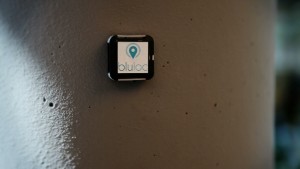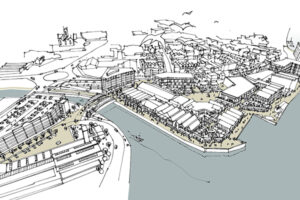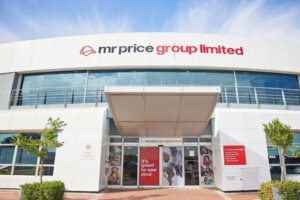
Thanks to the app shopkick, which is based on iBeacon technology, retailers in the US have been able to achieve a measurable increase in sales.
The most-used shopping app worldwide is shopkick. It connects customers with bricks-and-mortar retailers. shopkick was founded in the USA by Cyriac Roeding in 2010. The app has been available in Germany since October 2014 and currently has more than 1.9 million users. Its partners include retailers such as MediaSaturn, Douglas, Penny, Obi, Reno, and Karstadt. Upon entering a store, customers can collect points, called “kicks.” This is based on so-called iBeacon technology. The app helps traders increase their sales, as Roeding explained: “In the United States, we have had hard data for years from a partnership with Visa, among other sources. The Americans can link their shopkick app with their Visa credit card so that they also get kicks for the actual purchase of merchandise. This allowed Visa to create a clean statistical study comparing a shopkick group with a group without this app that behaved exactly the same until one group started using shopkick. The result: Our users bought on average twice as much as the other group.”

The iBeacon technology is based on a transmitter /receiver principle. Small transmitters are placed in space.
But how does the iBeacon technology work? Put simply, it is based on a transmitter-receiver model. Small transmitters, i.e. “beacons,” are placed in space. They transmit signals at fixed intervals. If a receiver—usually a smartphone with an app installed on it configured to receive the signal—comes within range of the transmitter, communication occurs. Store visitors can thus receive product information, promotions, etc. on their mobile devices. iBeacon technology is not just suitable for the retail industry, however, but also for sports facilities, educational institutions, museums, and much more.
Also for in-house navigation in malls

The iBeacon technology is based on transmitter /receiver principle. Small transmitters are placed in space. They transmit signals in fixed intervals. If a receiver—usually a smartphone with an app installed on it configured to receive the signal—comes within range of transmitter, communication occurs.
It is obvious that shopping center operators would want to make use of this handy technology. ECE, for example, is testing iBeacons for use in in-house navigation in malls and as part of a car-finding service in the parking garage. For its part, AFI Europe Romania announced last July that AFI Palace Cotroceni in Bucharest was the first shopping center in the country to be fully equipped with the technology. The company invested €1.5 million in the technology. CEO David Hay had the following to say about it: “AFI Palace Cotroceni is a benchmark when it comes to Romanian shopping centers and we wish to provide our customers with unique experiences when we open our doors to them. With the help of this app, visitors can locate their favorite store, read real-time information concerning sales and existing offers, or even undertake certain actions that make their shopping experience more enjoyable. Thus, the new technology will not replace the in-store experience but improve it. Even more so, in the near future, we will have the opportunity to generate relevant statistics regarding ongoing campaigns and adapt our strategy accordingly.”
One clear advantage iBeacons have over mobile phone, WLAN, NFC (Near Field Communication), and GPS is their very low energy consumption. Most importantly, however, they also work in places where other solutions may lose reception. In addition, they are small, cheap, and discreet. For the moment, however, it is not possible to use the all-rounders for mobile payments. Solutions to this problem are already in the works, however.
Slow start, rapid development
In any case, experts expect that 2016 could be the Year of the iBeacons in retail. That’s because, after a rather slow start for the technology three years ago, its development is now racing ahead. 2014 and 2015 were its “apprenticeship” years. There is now no doubt about how much the smartest retailers and shopping center operators benefit from targeted, contextual, mobile offerings for customers in their stores and their vicinity.





